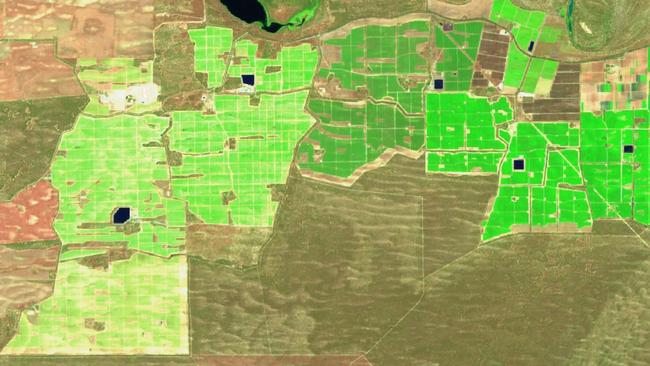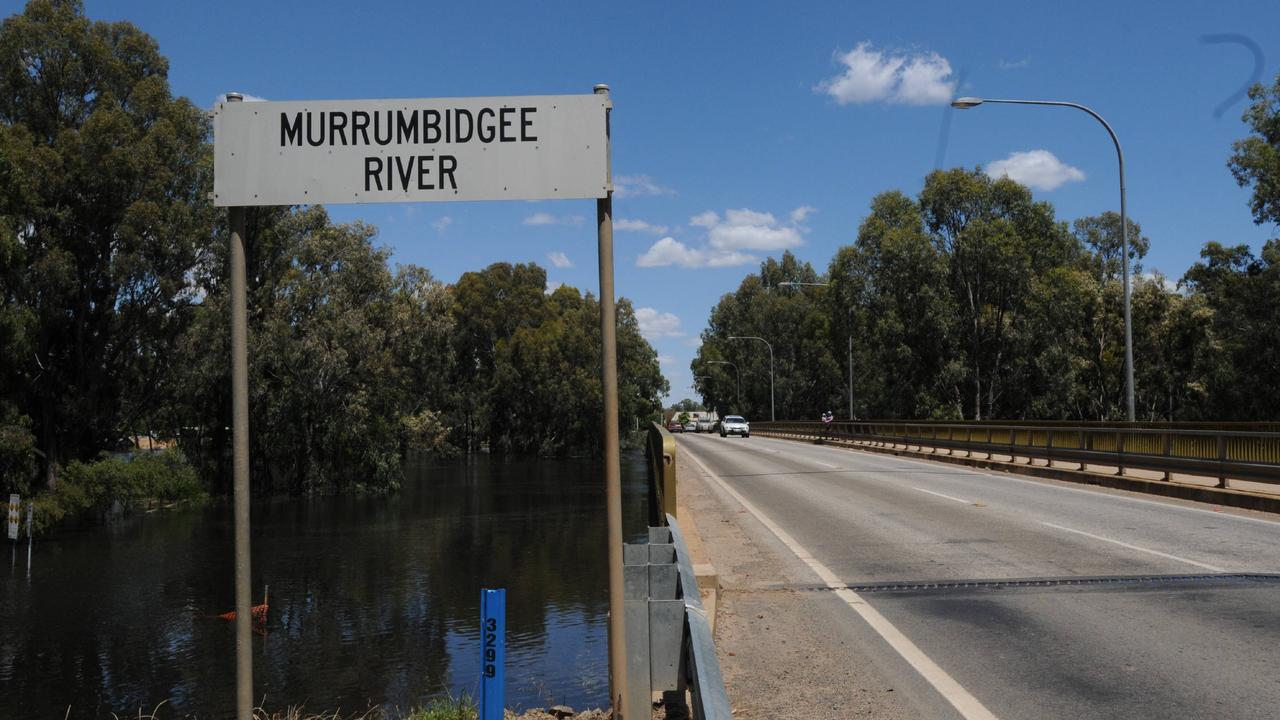Murray horticulture boom to pump 1500 billion litres: Little left for dairy and rice
The sun-baked red sands of South Australia, NSW and Victoria’s Mallee have been turned into plantations of green at the height of summer. But it comes at a cost.

THE Southern Murray Darling Basin’s horticulture boom is on track to pump 1.5 million megalitres of water out the river system within five years, forcing up the average allocation price to $380 a megalitre, beyond the reach of most dairy farmers and rice growers.
That’s the forecast from work commissioned by the Victorian Government and completed by Aither water consultants, which warns a repeat of the last 15 years of dry conditions would see allocation prices average $397/ML on the Goulburn, $370/ML on the Murrumbidgee, $318/ML above the Barmah Choke and $443/ML below.
The report is a shot across the bows of the irrigation sector, which has just gone through a season where prices hit close to $1000, despite allocations being twice what they were during the worst of the millennium drought.
Satellite images show the surge in demand for water is being driven by thousands of hectares of almond, tablegrape, citrus and olives groves, which have turned the sun-baked red sands of South Australia, NSW and Victoria’s Mallee into fields of green during the peak of summer.
Liparoo irrigation boom, Victoria (slide the arrow-bar to see the change over time)
Aither water consultants estimate “the growing fixed water demands of permanent horticulture industries will begin to push the limits of annual water availability”.
“During periods of future extreme dry water availability, existing permanent horticulture may demand essentially all surface and groundwater available in the connected Murray region. That is there may be no or very little water available to other industries such as dairy, cotton and rice.”
In Victoria alone the most recent SunRISE group report showed almond plantings shot up from just 4350ha in 2003 to 25,715ha last year, while tablegrape growers have continued to enjoy an Asian export boom that has driven plantings from 5805ha to 9620ha over the same period.
Across Victoria, NSW and South Australia, the Almond Board expects plantings to peak at 50,000ha under the current wave of developments, which will consume 600,000 to 700,000 megalitres at maturity.
US firm Hancock, Canadian pension fund PSP, Aroona Farms, Select Harvest, GoFarm and other corporate irrigators have dominated the growth in almond plantings, despite repeated warnings during the past 15 years of risks in being able to deliver water to the Lower Murray.
One water industry leader said goFARM’s almond plantings at the junction of the Murray and Murrumbidgee Rivers were expected to use about 50,000ML at maturity, which compares to about 90,000ML used by all Sunraysia irrigators, across the Merbein, Mildura, Red Cliffs and Robinvale districts.
goFARM plantings on the junction of the Murray and Murrumbidgee Rivers, NSW
GoFARM managing director Liam Lenaghan declined to comment on the issue, when contacted by The Weekly Times.
But Aither director Chris Olszak said there were “signs that new horticultural investments are slowing in the Lower Murray, driven by high entitlement and allocation prices, plus concerns about deliverability”.
Select Harvest reported this week its earnings had been curtailed by near record water prices, spending $21.5 million on the precious drop in 2019-20, up $8.7 million on the previous season.
Select and other members of the Almond Board have called on state governments to curb further growth below the Barmah choke to ease the risk of river operations managers being unable to deliver water to their plantings as the climate warms up.
The Bureau of Meteorology and CSIRO are predicting more heatwaves over longer periods, which will put even greater pressure on the Murray Darling Basin Authority’s river operations team to get water through the narrowing Barmah Choke to horticultural plantings during peak summer demand.
An independent panel of water bureaucrats reported to the MDBA last year that the drying climate, growing horticultural demand and the decline in the Barmah Choke capacity, from 11,500ML/day to about 9200ML/day, meant governments had to take action.
Victorian Water Minister Lisa Neville has already called in all works licences for new irrigation developments to try to slow growth below the Barmah Choke.
But her NSW and South Australian colleagues are yet to do the same.
One lower Murray industry leader said “water ministers were just like their premiers in the COVID-19 debate”, just going their own way.
Just last week a report was released by the MDBA, which highlighted the lack of government action.
“Over the past 15 years there has been growing concern within communities and governments that, over time, there was an increasing risk of not being able to deliver water allocations to water users in the lower Murray when they need to use them,” the Managing Delivery Risks report team stated.
“Therefore, something has to change.”
Plantings east of Waikerie, South Australia
Lyrup plantings, South Australia
Murray border growth, South Australia
Goodnight plantings, NSW


